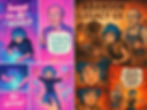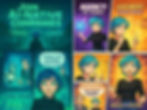UX Career Pivot for the AI Age: Told in Manga by 4 Different AI Models
- Jakob Nielsen
- Jul 17
- 3 min read
Summary: 4 AI models competed to use the Manga comic book format to tell the story of how to pivot your AI career for AI. See which manga you like the best. All succeeded in condensing a long theoretical article into a few engaging pages, reducing the word count by 94%.
The manga comic strips in this article are based on my recent article “Use the AI Transition Period to Transition Your Career.” For a faster overview of this material, watch these videos:
Explainer video: Pivot your career for AI (YouTube, 4 minutes = 48% of the typical time to read the article).
Song: How to develop human agency (YouTube, 3 minutes = 37% of the typical time to read the article).
I put the current leading AI foundation models to the test to see how they would present my article in Manga format. For Claude 4 Opus, ChatGPT o3, and Gemini 2.5 Pro, I asked for a 6-page manga. Since Grok 4 was the newest foundation model at the time of this experiment, I asked it to design 8 pages.

Four different AI models competed to create manga about my article. (Google Imagen 4 Ultra)
For all four AI models, I asked for the manga to be described in JSON format (one JSON per page), and then I had all of these JSON descriptions drawn by the same image model, GPT Image-1. This is the native image model for ChatGPT, so I could have asked it to draw the manga directly from my prompt, but I wanted to use a consistent process for all the models.
This approach of getting a JSON description first and then having it rendered is an example of indirect prompting, where you first ask one AI to generate a detailed prompt and then feed this result to another AI (or the same AI again) for a better result than if you had prompted directly without AI help. I took advantage of the indirect prompting to fix a few mistakes in the JSON descriptions before feeding them to GPT Image-1 for rendering. Mostly, though, what you’re seeing is what the four AI models made out of my original article manuscript, which was the basis for their JSONs.
Gemini and Grok have their own image models, but since they currently can’t render text accurately, I had to turn to GPT Image-1 for all the drawings.
Interestingly, all four AI models designed approximately the same protagonist: a short-haired young woman, often with purple or other non-human hair color. Claude and Grok also included a mentor-style character loosely modeled on me, whereas GPT used a more punk-style mentor in a lab coat. Claude even referred to its mentor character as “Sensei Jakob” in the JSON character list. (Whereas Grok called its mentor “Dr. Nielsen.”)
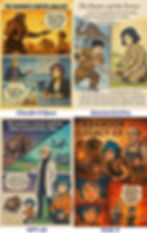
To allow you to compare the 4 manga styles easily, here’s a composite of the 4 versions of a page that all of them designed: the analogy of being a mammoth hunter in the age of agriculture is like being a UX professional who sticks with the old pre-AI design process. (By the way, Claude took it upon itself to name the prospective mammoth-hunting apprentice Grok. It didn’t know that I was pitching it against its fellow AI model, also named Grok.)
I can’t declare a winner. All 4 manga have their charm and excel in telling different aspects of my article. All succeeded in condensing a long theoretical article (2,078 words) into a few engaging pages, though I think Gemini used too many words on its comic-book pages.
From 2,078 words in the original article to 116 words in Grok’s 8-page manga: 6% of the word count. Which of the following 4 versions do you prefer?
Claude 4 Opus
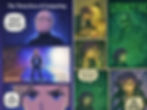


Gemini 2.5 Pro
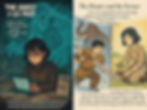
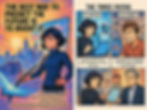

GPT o3



Grok 4

